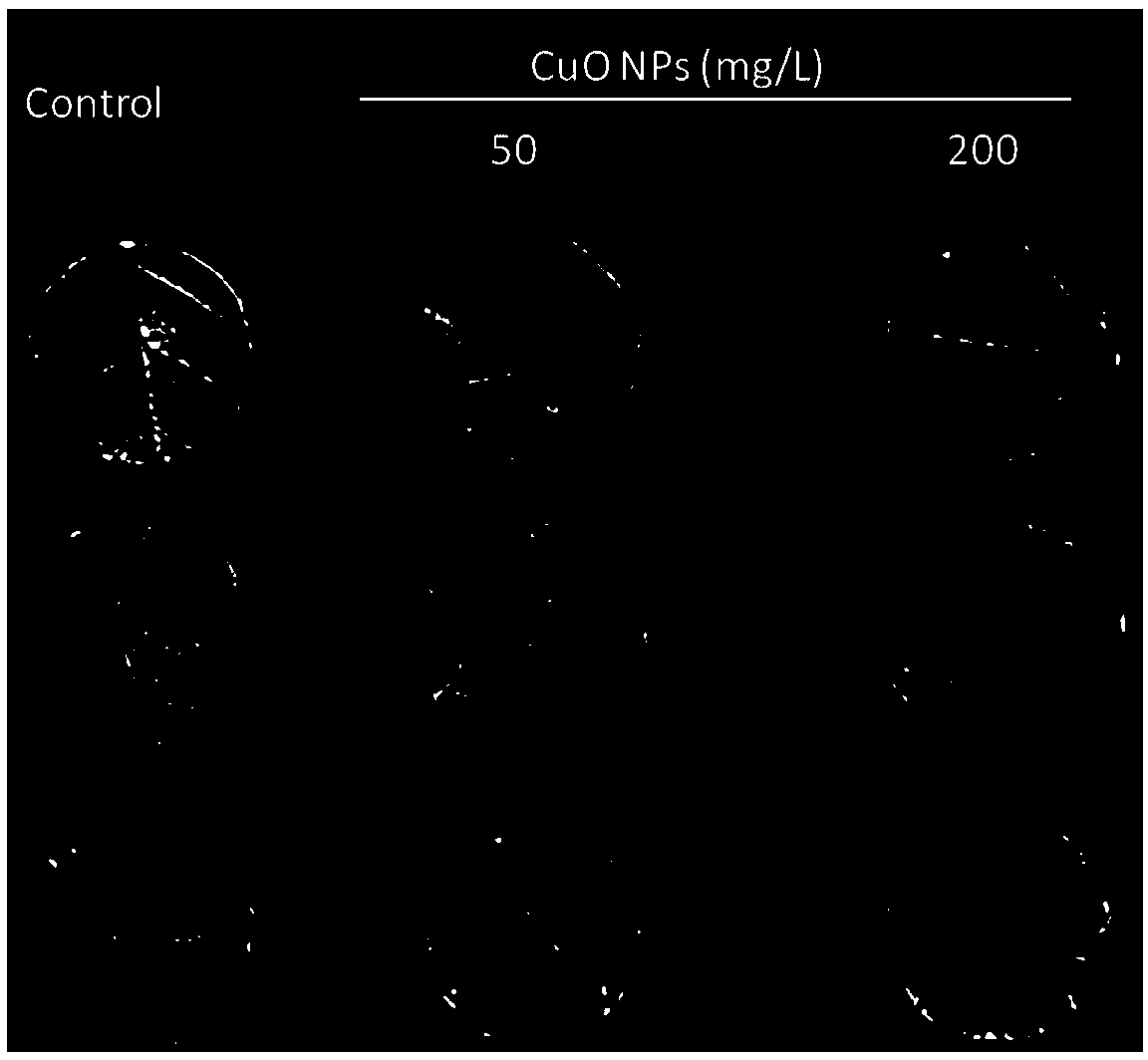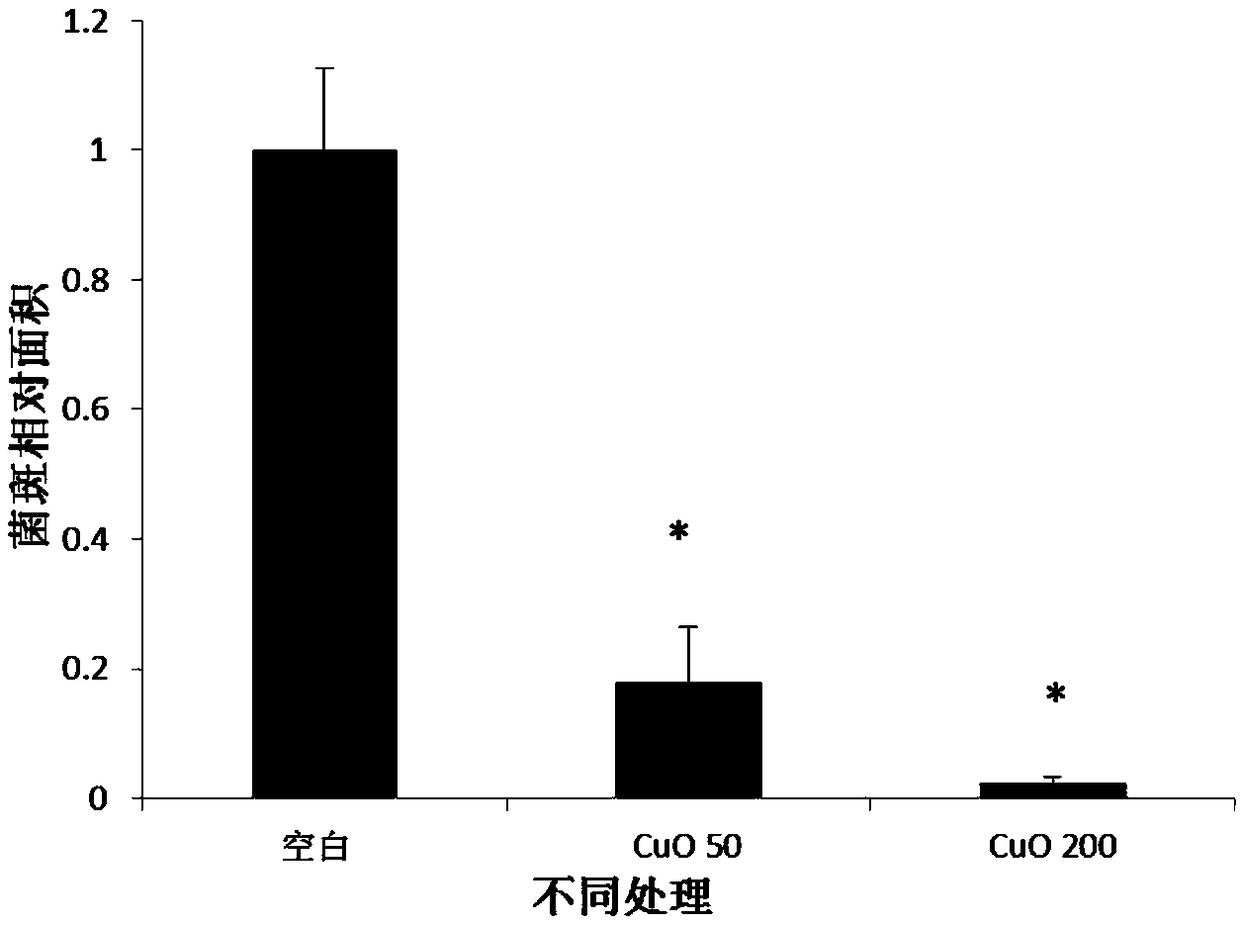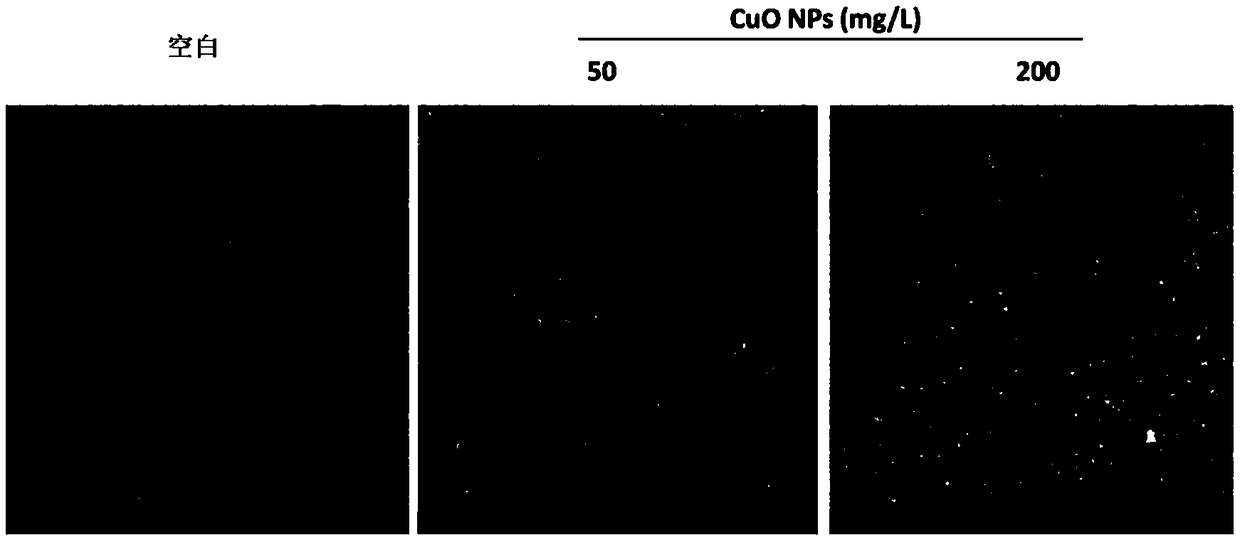Nanometer antibacterial agent for preventing and controlling plant fungal diseases
A technology for plant fungal diseases and nano-antibacterial agents, which can be used in plant growth regulators, fungicides, biocides, etc., and can solve problems such as high toxicity of non-target organisms
- Summary
- Abstract
- Description
- Claims
- Application Information
AI Technical Summary
Problems solved by technology
Method used
Image
Examples
Embodiment 1
[0030] Prepare the nano antibacterial agent for preventing and treating plant fungal diseases, comprising the following steps:
[0031] (1) Weigh 500g of copper nitrate and 1L of industrial ammonia water (28% concentration) into the autoclave, then add 1L of deionized water to dilute. Heat to 220°C under airtight condition, and react for 3 hours.
[0032] (2) Filter the reacted mixed solution to obtain copper hydroxide precipitate and reaction solution. After washing and drying the copper hydroxide precipitate, place it in a microwave sintering furnace and rapidly raise the temperature to 600°C at 40°C / min temperature, heat-preserved and calcined for 30 minutes, cooled and ground to obtain nano-copper oxide powder.
[0033] (3) disposing the obtained nano-copper oxide powder into the reaction liquid in step (1), and fully stirring to form a certain concentration of nano-copper oxide suspension.
[0034] (4) Add 3% volume of TEA sodium lauryl sulfate and 5% volume of Atractyl...
Embodiment 2
[0036] This example is used to illustrate the inhibitory effect of the antibacterial agent involved in the present invention on the infection of plant leaves by fungal pathogens.
[0037] The rose hybrida variety 'Samantha' (Samantha) used in this experiment was obtained from the Flower Breeding Base of Nankou Farm, Changping District, Beijing. Cut off twigs with 4-5 sections each with 5 pinnate compound leaves, put them in clear water immediately, and bring them back to the laboratory for processing within 2 hours. Trim the base of the shoots in water, keep 3-4 pinnate compound leaves and put them in distilled water to balance them for later use. The strains used in this experiment are powdery mildew of rose, Podosphaera pannosa, P. pannosa, provided by the College of Horticulture, China Agricultural University.
[0038] Cut the dense rose leaves of powdery mildew into a 50ml centrifuge tube, add 20mL of sterile water, vortex fully oscillate, remove the leaves, transfer to a...
Embodiment 3
[0046] The experimental process of this embodiment is basically the same as that of Example 2, the difference is that after the infection process ends, the fungus is collected to infect the leaves, and the number and growth status of the mycelia on the leaves are observed with a scanning electron microscope (SEM, Phenom ProX, Phenom, NLD) .
[0047] The results show that the novel antifungal agent involved in the present invention inhibits the germination and growth of powdery mildew bacteria, and both concentrations of antibacterial agents inhibit the quantity and activity of powdery mildew bacteria. Transmission electron microscopy showed that the mycelium of powdery mildew was dense, strong and vigorous in the blank treatment; after the two concentrations of antifungal agents were treated, only a small amount of powdery mildew mycelium existed on the leaf surface, and the mycelium was slender and inactive ( image 3 ). Microscopic observation further proved that two concen...
PUM
| Property | Measurement | Unit |
|---|---|---|
| Concentration | aaaaa | aaaaa |
Abstract
Description
Claims
Application Information
 Login to View More
Login to View More - R&D
- Intellectual Property
- Life Sciences
- Materials
- Tech Scout
- Unparalleled Data Quality
- Higher Quality Content
- 60% Fewer Hallucinations
Browse by: Latest US Patents, China's latest patents, Technical Efficacy Thesaurus, Application Domain, Technology Topic, Popular Technical Reports.
© 2025 PatSnap. All rights reserved.Legal|Privacy policy|Modern Slavery Act Transparency Statement|Sitemap|About US| Contact US: help@patsnap.com



